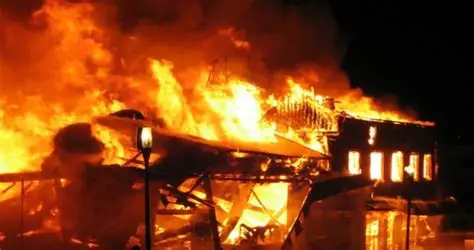Paragraph 1: The Outbreak and Initial Response
On Tuesday, July 15th, a devastating fire engulfed the Madina Ritz Junction area of Accra, Ghana. The blaze, which rapidly consumed numerous wooden structures, prompted a swift and comprehensive response from the Ghana National Fire Service (GNFS). Upon receiving reports of the inferno, the GNFS immediately dispatched fire engines from three strategically located stations – Madina, Legon, and Abelemkpe – to the scene. This rapid mobilization of resources underscored the severity of the situation and the GNFS’s commitment to containing the fire and minimizing its impact.
Paragraph 2: Firefighting Operations and Challenges
The firefighters arriving at Madina Ritz Junction faced a daunting task. The area, characterized by a dense concentration of wooden kiosks and makeshift dwellings, presented a significant challenge to firefighting efforts. The highly flammable nature of the structures allowed the fire to spread with alarming speed, creating an intense and dangerous environment for the responding personnel. Despite these challenges, the firefighters initiated rigorous operations to bring the blaze under control. They employed a range of techniques and equipment to combat the flames, working tirelessly to prevent further destruction and protect surrounding properties.
Paragraph 3: Public Communication and Safety Measures
As the firefighting operations unfolded, the GNFS maintained active communication with the public, providing updates on the situation through its official Facebook page. The service acknowledged the ongoing nature of the operations and assured the public of the firefighters’ dedication to controlling the situation. Recognizing the potential risks to bystanders, the GNFS urged residents and onlookers to maintain a safe distance from the scene. This measure was essential to protect individuals from the dangers associated with the fire, including smoke inhalation, falling debris, and the potential for further spread of the flames.
Paragraph 4: Assessment and Investigation
While the immediate priority was to extinguish the fire, the GNFS also recognized the importance of determining the cause of the incident and assessing the extent of the damage. Once the flames were fully extinguished, a thorough investigation was to be conducted to identify the origin of the blaze. This investigation would play a crucial role in understanding the circumstances that led to the fire and potentially preventing similar incidents in the future. A comprehensive assessment of the damage would also be undertaken to gauge the full impact of the fire on the community and to inform recovery efforts.
Paragraph 5: Community Impact and Recovery Efforts
The fire at Madina Ritz Junction had a profound impact on the local community. The destruction of numerous wooden structures, which likely served as homes and businesses for many residents, resulted in significant material losses and potential displacement. The incident highlighted the vulnerability of communities with densely packed wooden structures to fire hazards and underscored the need for proactive measures to mitigate such risks. In the aftermath of the fire, recovery efforts would focus on providing support to those affected, including temporary shelter, essential supplies, and assistance with rebuilding their lives.
Paragraph 6: Reflections and Future Preparedness
The fire at Madina Ritz Junction served as a stark reminder of the destructive power of fire and the importance of fire safety awareness and preparedness. The incident highlighted the critical role of the GNFS in responding to emergencies and protecting communities from such disasters. It also emphasized the need for individuals and communities to take proactive measures to prevent fires and minimize their impact. This includes adhering to fire safety regulations, ensuring proper electrical wiring, and having evacuation plans in place. The lessons learned from this incident could inform future fire prevention strategies and enhance community resilience to such events.


